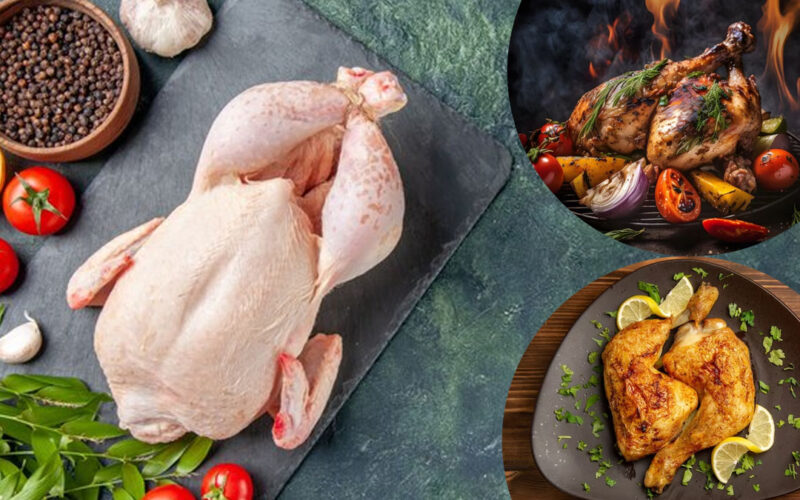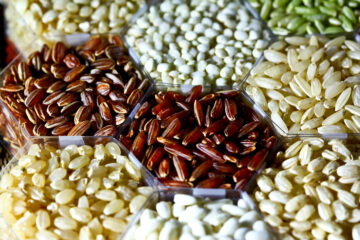Chicken meat is highly favored by people because it is affordable. It is praised across various culinary traditions as it can be prepared in multiple ways such as fried, barbecued, tandoori, or as chicken soup, making it a tasty option for all age groups.
Chicken meat stands out as a protein source with less saturated fat compared to beef. Furthermore, this protein is a rich source of essential amino acids, vitamins, and minerals. With no religious restrictions on its consumption, chicken is one of the most widely consumed meats globally.
The combination of amino acids plays a crucial role in determining the nutritional value of food. Chicken meat protein is considered a first-class protein because it contains all the essential amino acids in balanced proportions. Additionally, chicken meat contains an amino acid called tryptophan, which affects brain cells.
Tryptophan enhances the production of the hormone serotonin, which helps improve mood and alleviate stress. The biological value of the essential amino acids in chicken meat protein is 87.13 when cooked, with true digestibility at 81.43, and net protein utilization at 70.95.
Bioactive peptides, which are short protein fragments with beneficial biological activities, are present in chicken meat. These peptides are produced through enzymatic hydrolysis.
Various proteins and peptides in chicken have properties that help fight high blood pressure, have opioid effects, boost immunity, enhance mineral absorption, and exhibit antioxidant and antimicrobial activities. This indicates that chicken may become a reliable functional food in the future.
The leg portion of chicken contains proteins like collagen and hyaluronic acid, which promote cell growth, enhance water retention, and improve moisture absorption, making it a potential anti-aging agent for skin.
Regular consumption of chicken can effectively prevent type 2 diabetes. Eating chicken for 5-6 months, along with a low-carbohydrate and high-protein diet, can lead to weight loss. This diet may provide greater satisfaction, leading to reduced calorie intake during subsequent meals, and a reduction in carbohydrate consumption as part of high-protein diets.
Compared to red meat, chicken meat is considered a healthier option as it contains less fat and cholesterol. A 100-gram portion of chicken breast contains only 3 grams of fat, whereas skinless red meat typically has 5-7 grams of fat per 100 grams.
However, consuming chicken with the skin doubles the amount of fat and saturated fat in the meal. Therefore, it is recommended to remove the skin before cooking chicken. As people seek to reduce fat in their diet, chicken consumption has been increasing.
Chicken meat is low in saturated fatty acids and high in polyunsaturated fatty acids, making it a preferred meat. Chicken also provides essential polyunsaturated fatty acids like omega-3 fatty acids.
Moreover, the levels of these fatty acids are higher in chicken compared to livestock. Unlike beef and lamb, which contain trans fats linked to coronary heart disease, chicken meat is free from trans fats.
Chicken also provides nutrients and vitamins that are vital for brain function. Minerals found in livestock meat can affect taste, meat acidity, the biological activity of various enzymes, and the distribution of connective tissue.
Chicken meat is rich in essential minerals, including calcium, magnesium, phosphorus, and sodium. Compared to red meat, chicken contains half the amount of iron, mostly in the form of heme iron, which is absorbed at a rate of 15-20% compared to 1-10% from plant-based sources.
Iron is essential for the formation of hemoglobin, making chicken useful for combating anemia and supporting regular muscle function. Calcium and phosphorus are necessary for bone formation and normal bone function.
Phosphorus in chicken supports bone structure, central nervous system function, dental maintenance, and metabolic processes. Magnesium contributes to protein synthesis and normal muscle function.
Although chicken meat contains 8.6 to 41 μg of selenium per 100 grams, consuming 55 μg of chicken meat daily boosts metabolic rates, especially thyroid hormone activity, antioxidant defense systems, and the body’s immune response.
Zinc, involved in many metabolic reactions, is crucial for immune defense. Zinc deficiency can weaken the body’s immune system. Both zinc and protein from chicken contribute to overall health maintenance.
Among all vitamins found in chicken, vitamin B3, or niacin, is the most abundant, along with vitamins A and B6, which are present in higher quantities in chicken meat than in other animals. Niacin is necessary for the normal metabolism of carbohydrates and energy production.
Niacin also prevents vision loss, skin disorders, and neurological problems. It plays a role in the synthesis of sex hormones and helps lower blood cholesterol levels. A daily intake of 50 grams of chicken for children and 100 grams for adults provides the required amount of niacin.
Chicken meat is also a moderate source of thiamine (B1) and riboflavin (B2), which are important for energy metabolism. Additionally, it is a key source of vitamin B12, essential for the nervous system.
People with lower incomes greatly benefit from including chicken in their diet. Since it is easily digestible, chicken is a good food choice for both children and adults.
Compared to eggs, beef, and pork, chicken has lower fat content and higher protein levels. This helps consumers maintain the normal physiological functions of various organ systems, reduce the risk of non-communicable diseases like obesity, diabetes, and heart disease.
The proteins, vitamins, and minerals in chicken meat help prevent aging, promote muscle and bone growth, enhance the immune system, and boost brain function, making chicken a highly regarded meat.
M. Muthulakshmi, R. Rajkumar, P. Nalini, M. Pradeep, S. Divyapriya, Department of Livestock Products Technology, Veterinary College and Research Institute, Namakkal – 637 002.












